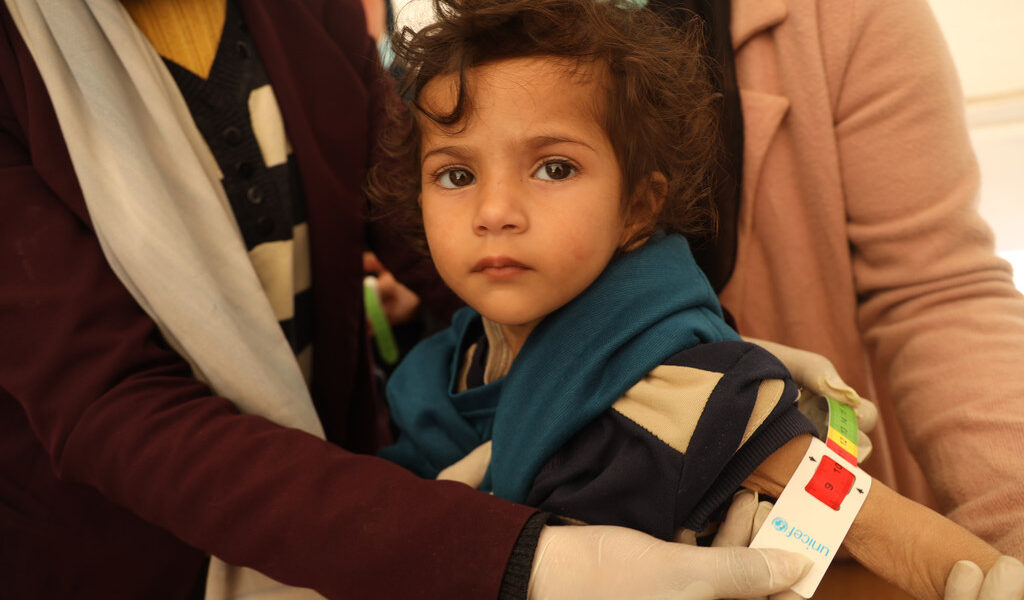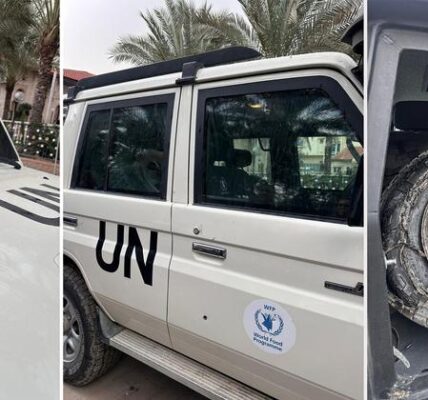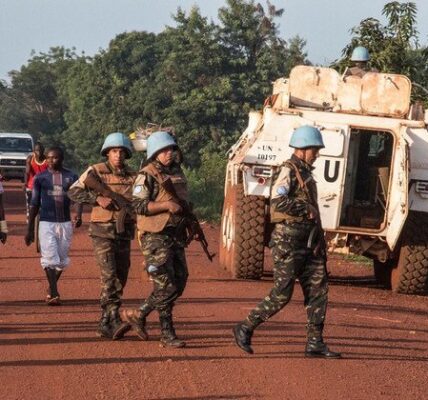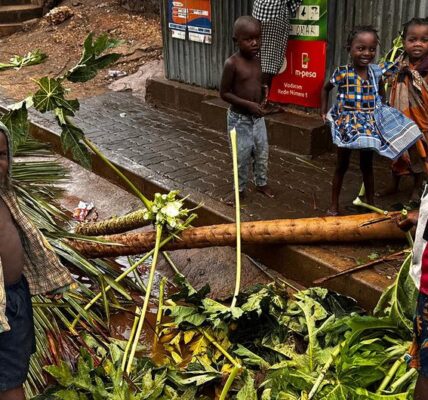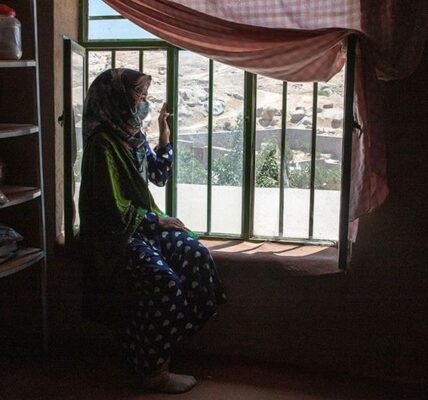Gaza is facing its worst fear of experiencing a famine, as reports emerge that a tenth child has died from starvation.
According to spokesperson Christian Lindmeier of the UN health agency, the official reports from yesterday or this morning stated that another child had been officially recorded as dying from starvation in a hospital. This marks a heartbreaking milestone, as the unofficial numbers are likely even higher.
The development followed media reports overnight that four children had died in northern Gaza’s Kamal Adwan Hospital, in addition to six other youngsters who died on Wednesday at the same facility and at Al-Shifa Hospital in Gaza City.
Hunger ‘catastrophe’
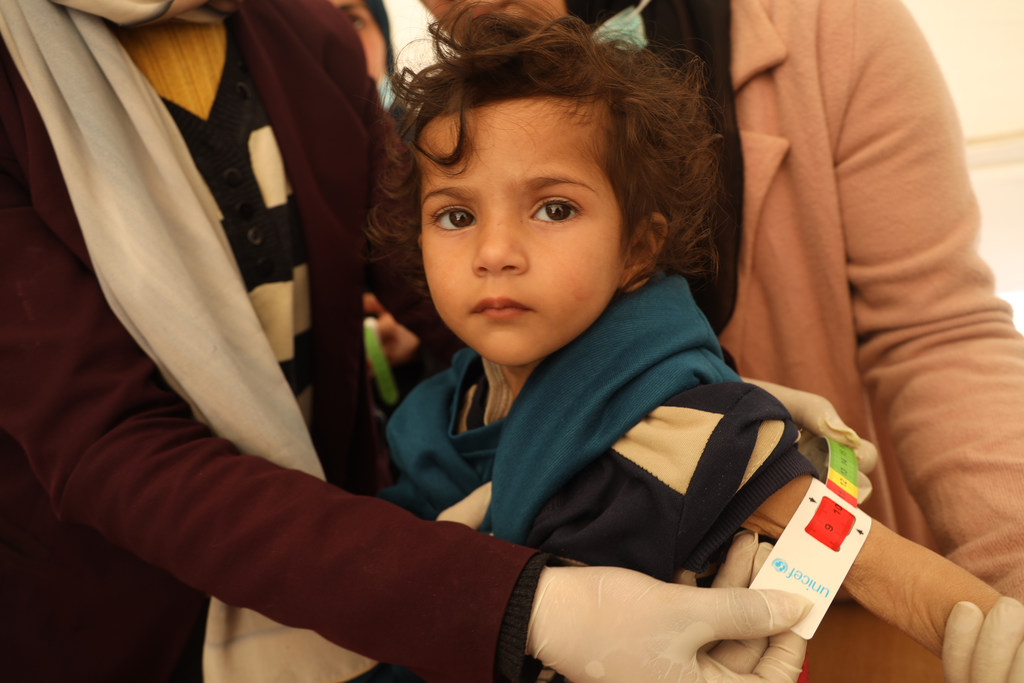
A two-year-old girl in Gaza has been examined, revealing signs of severe acute malnutrition and significant decline in weight and muscle mass.
The growing issue of food insecurity in the enclave, as reported by the UN Office for the Coordination of Humanitarian Affairs, is resulting in 25% of the population facing extreme levels of food insecurity. The situation further raised concern on Thursday as more than 100 Palestinians were allegedly killed and many more were injured while attempting to access aid from a relief convoy that was stopped at a roundabout in the southwest of Gaza City.
The UN Secretary-General, António Guterres, strongly denounced the incident and called for an independent investigation. Other high-ranking UN officials, including Martin Griffiths, the UN relief chief, also expressed their concern as reports of ongoing heavy Israeli attacks from air, land, and sea continued in large parts of the Gaza Strip.
Mr. Lindmeier of the UN World Health Organization (WHO) briefed journalists in Geneva about the images from Al-Shifa hospital where casualties of the attacks were seen laying side by side and in desperate need of medical attention.
“Interruption of water and electricity services.”
“The situation in Gaza, as we have repeatedly stated, is dire. It is worse than dire,” said the WHO representative. They elaborated that essential resources like water and electricity have been severely limited, ever since Hamas launched terrorist attacks on Israeli communities on October 7th.
Jens Laerke, the OCHA spokesperson, affirmed that prior to the conflict, individuals had access to food and were able to cultivate their own sustenance.
Currently in Gaza, obtaining food through traditional means such as agriculture and fishing is exceedingly difficult. According to Mr. Laerke, the ability to provide meals is nonexistent as the fundamental source for sustenance has been stripped away.
According to the most recent evaluations on the state of food scarcity, all 2.2 million people living in Gaza are deemed to be at “crisis” levels of food insecurity, as determined by the IPC classification index, which is a key resource for aid organizations. Within this population, approximately 1.17 million individuals are facing even more dire “emergency” levels of food insecurity, while the situation for an additional 500,000 is considered to be “catastrophic”, according to the OCHA spokesperson.
‘Dire situation’
“According to Mr. Laerke, we are facing an urgent problem approaching rapidly. He echoed a warning from UN humanitarians to the Security Council that there could be a famine in the area unless there is a significant increase in aid.”
The WHO spokesperson reported that the amount of aid reaching Gaza in February, provided by UNRWA, was only half of what was received in January. It was noted that the January shipment was already insufficient.
Last week, the Council received presentations from prominent humanitarian groups, such as the medical organization Médecins Sans Frontières. The organization stated that there has been a consistent trend of Israeli forces targeting hospitals and other civilian structures, as well as humanitarian personnel and vehicles. This indicates either deliberate intent or careless incompetence.
According to reports from the media, the Security Council had a closed meeting on Thursday evening but were unable to reach an agreement on a presidential statement concerning the aid crisis.
Vital signs
Once again, Mr. Lindmeier reiterated the United Nations’ continuous pleas for a temporary truce. He also pointed out that the unfortunate deaths of the aid convoy on Thursday emphasized the dire need for food, clean water, and other necessities in Gaza, which has been in conflict for almost five months.
“The true crisis lies in the scarcity of food and supplies, leading to dire situations that we are witnessing. Unfortunately, access to food has intentionally been restricted, leaving Gazans unable to sustain themselves,” he explained.
“The fields which were existing – the greenhouses, the little bit of agriculture – all that needs water supply, or water supply depending on electricity and pumping stations,” he explained. “This is the real drama; this just underlines more and more that we need an urgent ceasefire now. If not now, then when?”
Source: news.un.org
